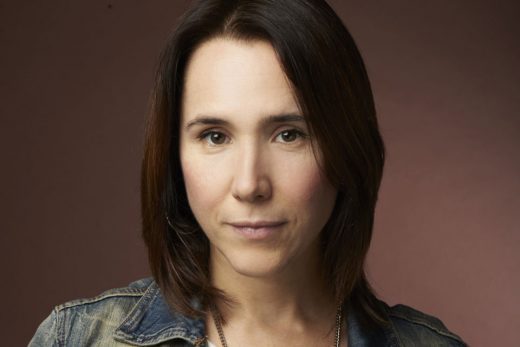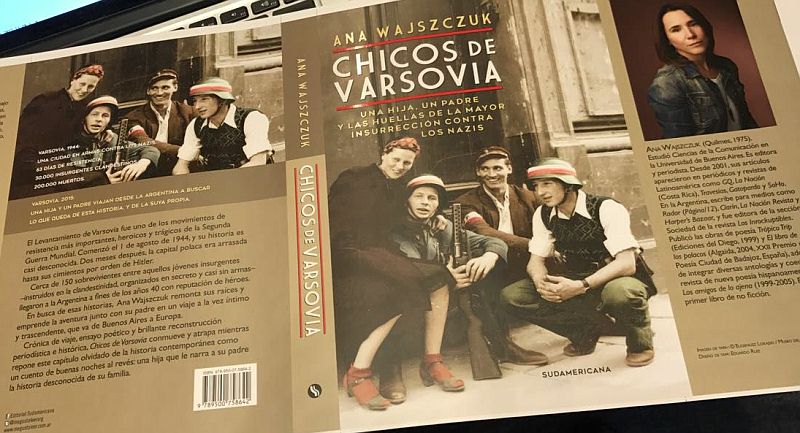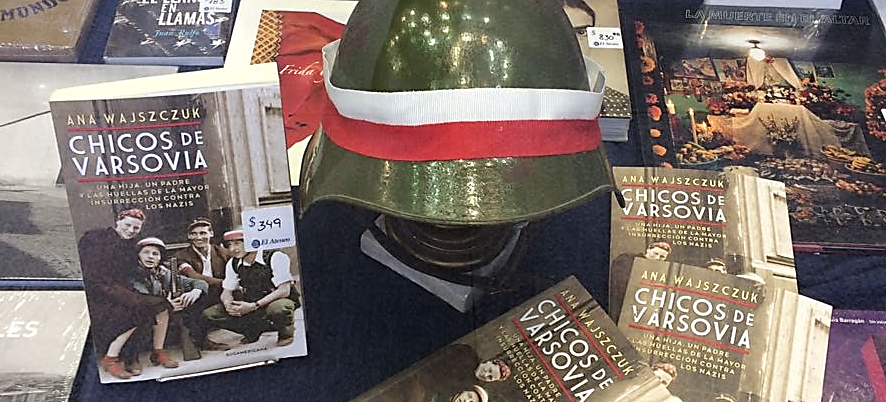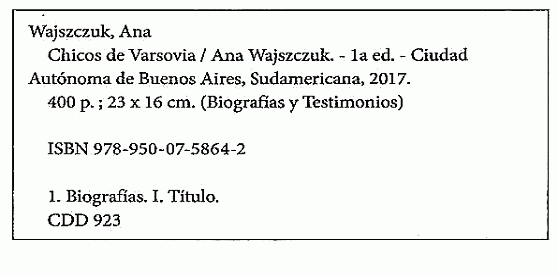| |
 | |
 |
|
Chicos de Varsovia (“Warsaw’s
Children”)
Inspiration for the book title came
from the 1944 Insurgents’s song: “Warsaw’s Children” - ("Warszawskie
Dzieci" - see below)

Ana Wajszczuk
“Warszawskie Dzieci …” - 1944
Warsaw Uprising song
https://pl.wikipedia.org/wiki/Warszawskie_dzieci
Refrain:
„Warszawskie dzieci,
pójdziemy w bój,
Za każdy kamień Twój, Stolico, damy krew!
Warszawskie dzieci, pójdziemy w bój,
Gdy padnie rozkaz Twój, poniesiem wrogom gniew!”
choir:
Warsaw's children, we go into
battle,
For every your stone , Capital, we'll give our blood!
Warsaw's children, we go into battle,
When you give your order, the wrath of enemies!
Text: Stanisław Ryszard Dobrowolski,
music: Andrzej Panufnik; composed - July 4, 1944, recorded August
1,1944 for the radio station Błyskawica, first broadcast – August 8,
1944;
http://www.tekstowo.pl/piosenka,zolnierska,warszawskie_dzieci.html
A Concept (”Myth”) of the
“People/Children of Warsaw”
From the book: THE JEWS IN THE LITERARY LEGEND OF THE JANUARY
UPRISING OF 1863. A CASE STUDY IN JEWISH STEREOTYPES IN POLISH
LITERATURE by Magdalena M. Opalski -
https://ruor.uottawa.ca/handle/10393/21177
Cyprian K. Norwid – 1861,
while abroad, responding to the news from WARSAW about unrest and
patriotic demonstrations, which followed a “miraculous apparition” –
prior to the 1863 National Uprising against the Russians:
/You ask:
what do I say when a Warsaw’s (little) child
rises backed-up by (in response to) a miracle?/ (14)
(14) C.K. Norwid, " Improwizacja
na zapytane o wieści z Warszawy”,
(1861) in Pisma wszystkie I, Wiersze I, Warszawa, 1971, p.383
Page 69 … the idea of
Polish-Jewish brotherhood. As the single most prominent episode in
current Polish-Jewish relations, it etched itself strongly in the
collective memory of the Poles. The Jewish presence in the
demonstrating Warsaw crowds not only gave the events a unique colour,
but also played a crucial role in creating the myth of the "people
of Warsaw". This new category born of the upheavals of 1861,
was seen as the collective incarnation of the national aspirations
of the Poles. The concept of "the people of Warsaw", a category
which included Jews and other strata of the urban population, was to
open a new chapter in Polish history. From the ideological point of
view the appearance of Norwid's rebellious "Warsaw child"
(====) pointed to important (https://en.wikipedia.org/wiki/Cyprian_Norwid)
changes in the Poles’ self-image as a nation. (The idea, and
manifestations, of the Polish-Jewish “brotherhood “ did survive only
for a few years!)
CHICOS DE VARSOVIA / WARSAW’S CHILDREN
A daughter, a father - in the footsteps of
the greatest insurrection against the Nazis
By Ana Wajszczuk

The cover of the book
This is the story of the Warsaw
Uprising as well as the story of my family: the Wajszczuks. A
real-life narrative where voices of the Uprising survivors who
emigrated to Argentina and still live at present – or their
children’s voices retelling those stories - melt together with
my personal history and the search of my own origins.
As a nonfiction novel, this book
intends through different voices to rescue the everyday life
history which happened during the Warsaw Uprising, narrated from
the journey to Poland I shared with my father in 2015 while the
71st anniversary celebration of that event was taking place.
This is an episode that, – despite being the bravest, most
important and tragic resistance movement of the Second World War
– is virtually unknown to the general public or mistaken for the
Warsaw Ghetto Uprising. Upon the destruction of the city and the
death of two hundred thousand Warsovians throughout 63 days of
battle, nearly 150 Armia Krajowa (AK, the “National Army” or
“Patriotic Army”) veterans arrived in Argentina by the end of
the 1940’s. The purpose of this book is to raise visibility to
some of these stories which were never told before.
The book tells the story of Jorge Łagocki, who was a child when
the Uprising broke out (and through his testimony also come out
stories of civilians); of Hanna Baranowska, who took part in a
battalion (and shared stories of women belonging to the AK); of
Susana Grinspan and her father’s story about the Jews who
battled in the Uprising. Furthermore, Juan Ricardo and Jorge
Białous also reveal their father’s story – a famous scoutmaster
captain and the highest-ranking insurgent who came to Argentina.
95-year-old Feliks Lech recalls what it was like being part of
another battalion hemmed into the south of Warsaw, and Andrés
Chowanczak recounts his father’s experiences in that same
battalion.
There is a connection between these stories of insurgents who
came to Argentina and a branch of my family: four siblings,
residents in Warsaw – cousins of my grandfather, Zbigniew
Wajszczuk, who at that time served in battle for Commander
Anders’s Second Corps Polish Army in the East - fought during
those days. Danuta, the oldest sister, was the only survivor
among them. She continued living in Poland and died in the 70’s.
In Warsaw, under the guidance of one of my uncles who lives in
the United States and who has made an extraordinary work of
reconstruction of our family history (available in
www.wajszczuk.pl), my father and I interviewed relatives,
friends and acquaintances of the Wajszczuk family, in an attempt
to put the pieces together of the story of those siblings who
died in battle for Poland: 20-year-old Antoni, 18-year-old
Barbara, and 15-year-old Wojtek.
Historical research is sustained
by diverse sources: books such as Warsaw1944 by Norman Davies as
well as General Komorowski’s memories and the latest works by
English researcher Alexandra Richie have been really helpful.
Other testimonies and material from investigative journalism,
documentaries and films from my previous visits to Poland in
2008 and 2009 are also included.
This book is a chronicle and an
investigative journalism work, while at the same time narrates
the story of a father-and-daughter journey. It is an expedition
to find out who we really are and the comeback to our origins; a
narrative of immigrant origins that most Argentinians take
within us, and the story told from a daughter to her father –
like a bedtime tale- about the Polish family he did not know.

The book on display in a bookstore window in Buenos Aires, Argentina

CHAPTERS
Introduction. Opening scene:
a German (miniature) battle tank captured by the insurgents. The
tank blows up amid sounds of jubilation and laughter. Barbara
Wajszczuk gets injured.
Chapter 1. There is a city, where time stops for a minute every
year. My father and I in Warsaw. It is August 1st, 2015 and
celebrations to commemorate the beginning of the Uprising
overflow the city. What are we doing there?
Chapter 2. August 1st, 1944, 17:00. Beginning of the Uprising.
Introduction to the history of the Wajszczuk siblings, members
of the AK, the clandestine resistance against the Nazi
occupation.
Chapter 3. Siedlce Boys. How this story came to me. The email of
uncle Waldemar about our family tree which unveils an unknown
story in our family. My grandparents and the origins of the
family in Poland.
Chapter 4. Krochmalna Street. First days of the Uprising: Wola
massacre, Jorge Łagocki’s story –a 7-year-old boy at that time,
who spend the entire Uprising hiding in a basement- and how the
civilians lived during the first days of euphoria.
Chapter 5. Antoni, Basia and Wojtek. The death of the Wajszczuk
siblings on the first days of the Uprising: our visit to the
cemetery and their graves. Antoni – there is not much
information about him; Wojtek - homage and mass at Pęcice town’s
memorial site. We are hindered by “J” – Danuta’s son (Danuta was
oldest sister of the three siblings who died in the Uprising) -
to ask us to leave his family alone because he does not agree on
the publication of this book.
Chapter 6. Warsaw Girls. The story of Hanna Baranowska, the last
warrior alive in Buenos Aires. The role of women in the AK:
messengers, nurses, liaisons.
Chapter 7. Siedlce-Krasnystaw-Lublin. Journey to Siedlce, the
cradle of the family. I begin to feel disappointed, as no one
knows much and everybody says my next interviewee will surely
know more. Some traces about uncle Karol, who died in Dachau.
Visit to Majdanek. Aunt Lilka and the homage to the insurgents
of the family in the town of Krasnystaw. A visit to the family
graves with my grandmother’s ashes.
Chapter 8. Surviving Twice. Susana Grinspan, of Jewish origins,
tells me the story of her father, who managed to ran away from
the Ghetto and subsequently battled in the Uprising. Tension
between the AK and the Jews: the complex relationship between
Polish Jews and Catholics before, during and after the war.
Chapter 9. Basia: sharing reflections through the hospital
window. August 13th, 1944: Barbara Wajszczuk’s story - injured
by the explosion of a miniature German battle tank-trap, which
the insurgents unknowingly snuck in, like a “Trojan horse”. Dead
two weeks later when the hospital where she was recovering was
bombarded. In Warsaw we attend the homage to commemorate the
victims of that day. An interview with Antoni Dobraczyński ,a
blind, almost deaf man and the little pieces we managed to
understand from his story: he was the last one who saw her
alive. Other testimonies about what happened.
Chapter 10. Captain Jerzy.
Journey to Neuquén (Argentine
Patagonia) with my father to interview Jorge and Juan Ricardo
Białous, Captain Jerzy’s sons. Captain Jerzy was one of the
heroes of the Uprising, who was exiled to Argentina, on the
Andean foothills, 300km away from Neuquén. The Uprising is being
hemmed in. ???
Chapter 11. Mokotów Soldiers. End of the game. The last days of
the Uprising. The story of Stanisław Chowańczak told by his son,
and of Feliks Lech (who died shortly after I interviewed him),
both of them soldiers of the Mokotów district, the last area
which surrendered. The capitulation and Warsaw in ruins. Current
debates on the Uprising. My efforts to make sense of it all,
between some kind of overwhelming emotional attachment to their
heroism and critical views. How can a person understand a story
so distant in time and language?
Chapter 12. Warsaw passed through here.
Maria and Danuta (mother
and oldest sister respectively of the Wajszczuk siblings who
died in the Uprising): what became of them? How did they escape
from Warsaw? How did they hear of the death of the brothers?
Correspondence with uncle Waldemar. Pruszków Transit Camp for
civilians: a visit with my father. The camp’s inscription
“Warsaw passed through here”: more than 600 thousand people
walked through this camp, destined to slave labor in the Reich,
concentration camps and deportation to inland Poland. Oberlangen
Camp for female prisoners of war: final part to the story of
insurgent Hanna. Epilogue of the journey and the book: our last
day in Warsaw.
Praises for the book Chicos de Varsovia / Children of Warsaw in
Argentina:
“Ana Wajszczuk is living a personal spring. Her brilliant
historical memory Chicos de Varsovia (Sudamericana) is now in
its third edition. It is a moving story, which clears a path
between the course of WWII and the history of Polish resistance.
This is a book where the author gets the pieces of her family
tree, put them together and makes them flourish by dint of
asking, searching, digging in family histories.”
(Susana Reinoso, Clarín newspaper)
"The family research and the tragic history of the Polish
insurgence against the Nazi occupation perfectly matched with
prodigal harmony in Chicos de Varsovia, A great chronicle
written by Ana Wajszczuk"
(Alejandro Caravario, Brando magazine)
"Chicos de Varsovia (Sudamericana) is a multi-faceted, beautiful
and heart-breaking book which reconstructs the Warsaw Uprising
that began on August 1st 1944, a movement of resistance against
the Nazis which lasted 63 days and mobilized 30,000 clandestine
insurgents”
(Silvina Friera, Pagina/12 newspaper)
"As a writer and researcher, but also as the granddaughter of an
insurgent, Wajszczuk reveals to us the extent to which crimes
against humanity are, above all, a grievance to the future"
(Damian Tullio, Rolling Stone magazine)
"Chicos de Varsovia (Sudamericana) is one of the greatest books
of the year. The texts is a reconstruction of many heroic deeds,
but goes further and proves to be a learning novel. As the
author moves forward in the historical events, she veers off to
wonder about her place in the story, her relationship with the
family that remained in Europe and with her father, as well as
her struggle to embrace the unattainable past"
(Patricio Zunini, Infobae online newspaper)
"Through her book -which is a travel novel, and essay and
historical and journalistic investigation simultaneously- the
journalist and writer rescues a forgotten chapter of the Polish
history and dives into her own family history. And moreover: she
creates memory"
(Agustina Rabaini, Sophia magazine).
"Wajszczuk set out on a journey through time, space and language
to come close to a story that was partly of her own but also was
slipping permanently through her fingers. Wajszczuk explored it
all in full detail, with thorough examination and pliant eyes.
There are books quoted, heartbreaking testimonies, specialists,
museums packed with memorabilia and a city rebuilt after its
ruins. But the limits of the historical reconstruction –all that
we will never know- is also present in this investigation"
(Natali Schejtman, Radar, cultural issue from Pagina/12
newspaper).
"The first nonfiction book by the editor and journalist born in
Quilmes in 1975 is the promising surprise of the year. In a
mixture of genres which includes the travel chronicle, the
historical reconstruction and the poetic impulse, the author
tells her father his family history during the Warsaw Uprising
which took place in 1944."
(Daniel Gigena, La Nación newspaper)
Author’s Bio
Ana Wajszczuk was born in Quilmes in 1975. She studied
Communication Studies in the University of Buenos Aires and
works as an editor and journalist. Since 2001, her articles have
appeared in Latin-American newspapers and magazines such as GQ,
La Nación (Costa Rica), Travesías, Gatopardo and SoHo. In
Argentina, she writes for media such as Radar (Página/12),
Clarín, La Nación Revista, Sophia and Harper´s Bazaar. She was
the editor of the section Sociedad of Los Inrockuptibles
magazine. Furthermore, she is the author of the poetry books
Trópico Trip (Ediciones del Diego, 1999) y El libro de los
polacos [The book of the Polish] (Algaida, 2004, XXII Premio de
Poesía Ciudad de Badajoz, España). She also wrote poems and
short stories which are part of several anthologies and
collaborated as an editor for the magazine of new Latin American
poetry Los Amigos de lo Ajeno [The pilferers] (1999-2005). This
is her first nonfiction book.

https://www.facebook.com/anawajszczuk/posts/2221357494766458
Translation
|
#Chicosdevarsovia was born, somehow, of the
information that my paternal grandfather’s cousin,
Waldemar Wajszczuk, as a Sherlock Holmes of our family
history, was collecting and adding to the page
www.wajszczuk.pl.
Waldemar, at his eighty and some years, is tireless. We
met only once - he lives in Michigan, United States -
but we communicate almost every week.
He just sent me the last item that was uploaded to our
family website: the information about my book.
For those who read in English and/or Polish, here is the
information:
//www.wajszczuk.pl/english/drzewo/tekst/0064ana/Chicos-de-Varsovia.htm;
https://www.wajszczuk.pl |
|
|
 | |
 |
|
|
|